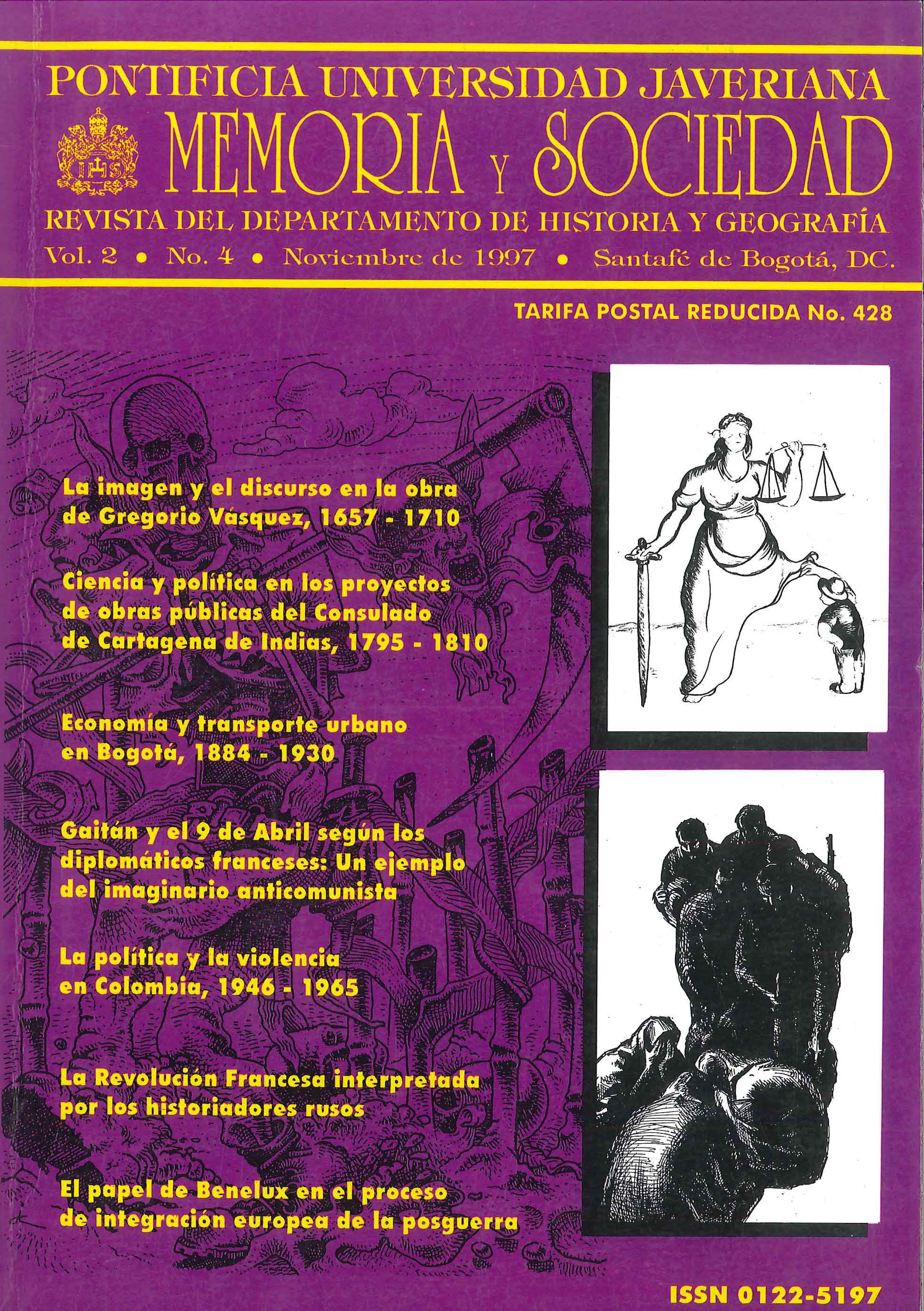Abstract
Using the painings of Gregorio Vásquez, this article integrates art and cultural history as sources of social history during the colonial period. In the first section, the author demosntrates how colonial Latin American's conception of the world differed from the European perspective. The religious institutions in America utilized pictorial art as a means of communicating and circulating ideas through images and codes. The second section analyzes the background of Vásquez and his work. His style developed through formation in the "colonial school" but some traces of the "European school" are evident in his work. Characterized but a certain mysticism, religious themes dominate his paintings. The final section of the article classifies the entire body of Velálzquezs work utilizing a criteria that corresponds to three critical stages of the artist's life.The journal Memoria y Sociedad is registered under a Creative Commons Attribution 4.0 International Public License. Thus, this work may be reproduced, distributed, and publicly shared in digital format, as long as the names of the authors and Pontificia Universidad Javeriana are acknowledged. Others are allowed to quote, adapt, transform, auto-archive, republish, and create based on this material, for any purpose (even commercial ones), provided the authorship is duly acknowledged, a link to the original work is provided, and it is specified if changes have been made. Pontificia Universidad Javeriana does not hold the rights of published works and the authors are solely responsible for the contents of their works; they keep the moral, intellectual, privacy, and publicity rights.
Approving the intervention of the work (review, copy-editing, translation, layout) and the following outreach, are granted through an use license and not through an assignment of rights. This means the journal and Pontificia Universidad Javeriana cannot be held responsible for any ethical malpractice by the authors. As a consequence of the protection granted by the use license, the journal is not required to publish recantations or modify information already published, unless the errata stems from the editorial management process. Publishing contents in this journal does not generate royalties for contributors.

